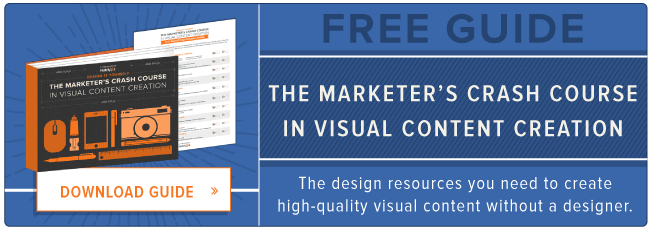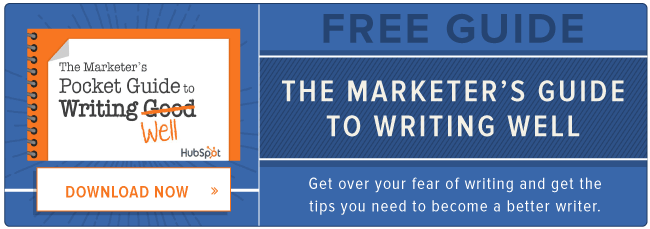Posted by rjonesx.
As much as we like to debate content vs. links, sometimes great content just seems to dominate. I don't mean to say that great content doesn't get great links, or that the purposes of creating great content is not to get links, but simply that some content on the web seems to shine through the SERPs.
Content might not be king, but it has lot of sway in Google's kingdom.
After sifting through tons of SERP data to find million dollar answer boxes (answer box results that rank at the top for keywords driving millions of dollars in traffic), I decided to dig deep to find content just like it across the web. But I wanted to do something different, something harder. I wanted to find content that didn't have huge Domain Authority. Sure, it is easy for the Wikipedia's and YouTubes of this world to rank for huge keywords, but what about the little guy? Are there any pieces of content out there bringing in millions of dollars of traffic coming from domains with Domain Authority around 50 or lower? And if so, what sets this content apart from the rest? Let's find out!
First, I needed a little help in deconstructing exactly what makes this great content tick. I enlisted the SEO greats - Garrett French of CitationLabs who essentially wrote the book on linkable content, and Mark Traphagen, Internet social guru extraordinaire from Stone Temple.
So let's begin.
Finding great content
I didn't want to start with any assumptions. I didn't want to assume that great content was pretty, or thorough, or authoritative. I wanted to judge content by its results, not its features. I set 3 distinct qualifications:
- The content URL couldn't be a home page.
- The domain couldn't have a Moz Domain Authority above 55.
- The content URL had to earn more than $1,000,000 a year in traffic based on a recent click through model, traffic volume, and estimated CPC of the keywords for which it ranks.
With those parameters set, I went digging. With SERPScape and the MozScape API, we quickly uncovered dozens of contenders out of just a sampling of the data set. So, what did we discover? What patterns did we find across the board? What set this content apart?
Feature #1: On-point

One of the most obvious trends was simply how perfectly and thoroughly the top content answered the users queries. It wasn't that the content was necessarily long (although in many cases it was). However, the content was highly relevant, regardless of its length. Take for example this "bed sizes" web page on SleepTrain.com.
Most webmasters would be content with just throwing up a quick intro paragraph and dimensions, but the SleepTrain site provides it several different ways...
- An overlay comparison image with Dimensions
- A textual table listing of sizes
- Several separate images showing people placement on the different mattresses
- A textual analysis of common bed sizes describing who would and would not fit by their height.
Now, I know what you are thinking. This isn't all that great!, but everything must be seen in context. Look at the next several listings. Wikipedia is a nightmare of text, BetterSleep is just text, bedding experts is a little better, but doesn't have the first overlay chart, SleepCountry only has the overlay chart... No other page in the top 10 answers all of a user's questions as thoroughly but succinctly as the SleepTrain site.
But don't take my word for it, we saw this over and over again in the data. We know that good, thorough content can rank well, and we saw just that. The average topical relevancy scores of our Million Dollar Content pieces were significantly better time and time again than the average competition in the SERPs.

In fact, some pages had scores that were truly mind blowing. One particular page on resume templates hit 99.96% relevancy! To get that level of precision, not only do you need to be highly thorough, you also have to be highly restrictive to prevent the addition of content that isn't relevant. That means no filler. Subsequently, this one particular page ranked for over 2,000 related keywords!

Feature #2: Bold
Conventional wisdom rarely helps you win in a competitive atmosphere. If you do what everyone else thinks should be done, you are predictable, and predictable is beatable.

For a few years now, one of the items on my regular audit list has been page speed. We know that TTFB (time-to-first-bite) correlates with search rankings, that fast download speeds correlate with increased conversions and better user engagement, and we even have an official announcement from Google that page speed matters for rankings.
Well, StyleGlam gives Google a giant middle finger when it comes to page speed. The page is bold, image-laden, and is even filled with ads.

The page clocks in at a turtle's pace of 24.9 seconds to load and an elephant's weight at 7.49MB in size! But maybe that is the point.
The game of SEO is all about compromises. When you make a page load quickly, you often have to compromise on images, text, and thoroughness. When you make a page informative, you might have to compromise on conversion rates. In this case, the webmasters came up with a completely different balance. They chose not to compromise on thoroughness, information content, conversion points (look at the ads!) and instead let page speed die a horrendous death. But the trade-off worked!
StyleGlam wasn't the only site we saw throw page speed to the wind in order to go big. Sites in the resume space, calendar, degree and health care spaces often took refuge in being big before being quick.
But we also saw the opposite true. Paired-back resources that answer one question very quickly, very easily, very simply can also win. What seems to never make its way to the top though is conventional content on a conventional sites. If you aren't a big brand, you better be different, be better, be bold.
Feature #3: Fresh
Can content survive in high spam, high value keyword niches? You bet it can. I was shocked when I came upon this one, as it was just a well managed blog post that was now several years old. It was surrounded by the latest entrants into a niche that was notoriously getting shut down and cleaned out: free streaming movies.

So how does a simple blog post on the best free movie sites manage to bring in $1,000,000+ in traffic not just this year, or last year, or the year before but for years and years on end?
Well, one thing we noticed about it and many others was content freshness. I can't tell you how many times a client has been scared to update their content that already ranks. "But what if I break it? What if I lose rankings?"
Not updating your content IS breaking it.
The truth is that if you are not updating your content regularly, Google will have to assume that your content is losing its reliability. So why not? Over time, you will build up a great backlink profile by sheer longevity, while at the same time keeping content as fresh as new competitors entering the space.

The author here found a great opportunity. People wanted to find these sites, they kept disappearing, and someone needed to keep an up-to-date record of the best ones. Now, the webmaster didn't create it once and leave it, or update it annually. They updated it regularly. The net result?

This piece of content has enjoyed long-term, million-dollar rankings while competitors have come and gone. They have ranked for thousands of keywords for several years by simply creating great content and keeping it fresh.
Linkable million-dollar pages
 I am now going to turn this study over to Garrett French. Garrett is the founder and chief link strategist of Citation Labs, a link-building agency and campaign incubator. He's developed multiple link-building tools, including the Link Prospector and the Broken Link Finder. He also co-wrote The Ultimate Guide to Link Building with Link Moses himself, Eric Ward. Garrett and his team lead monthly webinars on enterprise content strategy and promotion from the Citation Labs Blog.
I am now going to turn this study over to Garrett French. Garrett is the founder and chief link strategist of Citation Labs, a link-building agency and campaign incubator. He's developed multiple link-building tools, including the Link Prospector and the Broken Link Finder. He also co-wrote The Ultimate Guide to Link Building with Link Moses himself, Eric Ward. Garrett and his team lead monthly webinars on enterprise content strategy and promotion from the Citation Labs Blog.
Only 34% of the content studied has at least 1 link in OSE. That's right - there are tons of pages getting $1,000,000+ worth of organic search traffic yearly that have few if any external links. A lack of links does not necessarily demonstrate a lack of linkability, but I will say that overall these pages don't seem "designed" for linkability.
Before we get to individual examples of linkability though (they do exist in this set!) I'd like to outline some basics on how we evaluated these pages.
- At Citation Labs, we divide linkers into "curators" who collect URLs for a single existing resource page and "editors" who publish new topic pages. Tactically speaking, the curators support broken link building and "link request" efforts, while editors support PR and guest posting campaigns.
- We believe that it's primarily the linkers themselves who define a document's linkability - both by their decision or not to link and how many potential linkers there happen to be.
URLs Linkable to Curators

Linkable Document - Timberline Knolls
Drug addiction, a subcategory of mental health, is one of the single most linkable topics we've encountered in our work thus far. This URL provides clear and comprehensive information for concerned loved-ones of a potential heroin user. These concerned loved-ones are a "linker-valued audience."
To get a quick read on how many curators might be out there for this topic, search for this query heroin inurl:links.html. We use the inurl:links.html portion of the query to get a sense of volume. There's a ton out there for this document which makes it not only linkable but worthy of further promotion on its own.
Curators are - relatively speaking - quite rare. The existence of curators seems to be topically-driven and are especially prevalent across health and education.

Linkable Document - Wixon Jewelers
I would examine the potential for a broken link building campaign in the "birthstones" area for this URL. In addition, it appears (based on this query: birthstones inurl:links.html) that there are enough potential opportunities to support a request campaign as well.
Birthstones probably won't get curators linking quite like addiction will. That said, they remain embedded in our collective psyche and if a related URL happens to be dead this could be a great candidate for a linkable page.
URLs linkable to editors

Linkable Document - SMU Mustangs
I'm not a sportser, but this URL stood out in our analysis because it had 60+ root linking domains. This seems to be a hub for SMU's football team, complete with a calendar. Bloggers, sports journalists, opponents, local events websites, all of these folks should be interested in linking to and supporting this team. Businesses could consider starting a competitive football team to replicate this effort ;)
But seriously, one takeaway, especially for local, is supporting the beloved local sports teams and events.

Linkable Document - The Best Schools
At first pass, my strategy would be to promote via PR, ideally in conjunction with the ranked schools to help them get the most out of their top ranking. Secondly, I'd run a low-scale branded guest posting effort. Guest posting topics could cover "following dreams," "seizing the day," "increasing your income," "going back to school as a parent", etc. If you repackage the data for a linker-valued audience (Best Online Colleges for Seniors) you could potentially build out a link request campaign too.

Linkable Document - Top 10 Home Remedies
The title - "How to Get Rid of Pimples Fast" - makes this one a tough pitch to skin health curators. That said, I think it could be a fantastic citation opportunity in a guest posting campaign. Target blogs that are more lifestyle oriented - makeup blogs perhaps, dating advice blogs etc - and build out titles that are not necessarily directly related to pimples or blemishes themselves.
Here are a couple more in that same vein - they could work well as supporting citations in a guest posting effort:
StayGlam: Nail Designs for Short Nails
Hair Style On Point: Top 10 Short Men's Hairstyles in 2015
Most editors would not think twice about allowing those links to live so long as they fit topically and have potential appeal to the reading audience.
Linkability takeaways
The majority of these million dollar pages are not purely linkable, but many could support link building campaigns. Pay close attention to the link profile of the entire domain for link building campaign guidance - the ranking pages may not be there based on their individual link earnings.
Shareable million-dollar pages
 So how do these million dollar content pieces actually perform in the very different context of social media?
We'll let the venerable Mark Traphagen, Senior Director of Online Marketing at
Stone Temple Consulting and
give us some insights on how this high performing content makes out in the world of social media. Mark is a world traveler, speaker, consultant and is
actually a Klout Top 10 Expert for SEO & Content Marketing, meaning he actually does know how to make this social stuff work.
So how do these million dollar content pieces actually perform in the very different context of social media?
We'll let the venerable Mark Traphagen, Senior Director of Online Marketing at
Stone Temple Consulting and
give us some insights on how this high performing content makes out in the world of social media. Mark is a world traveler, speaker, consultant and is
actually a Klout Top 10 Expert for SEO & Content Marketing, meaning he actually does know how to make this social stuff work.
Just as Garrett revealed above that million dollar content does not necessarily have to have a lot of external links (or even any at all), so I found that there is little-to-no correlation between the number of social shares and whether or not content will win Russ's million dollar prize.
45% of our sample group had no social shares at all (according to Buzzsumo) and 66% had fewer than 300 shares.
Of course, just like having a lot of good links "sure can't hurt," having a lot of social shares certainly increases the chances that your content will do well organically. In fact, the page with the highest number of social shares in the sample group (it had over 1 million) also has the lowest domain authority of the group (21). Moreover, 60% of the pages with 1000 or more social shares have a DA of 40 or less.
Now I'm not suggesting that this proves that the million dollar status of those pages was driven directly by their social popularity. In fact, I consider it unlikely that social popularity is a direct ranking factor at the present time. However, it is likely that wide exposure via social media increases the chances of activity that very likely does factor into Google's ranking algorithm.
Before I take a deeper look at the most-shared content, I have to share two interesting tidbits from my examination of the pages Russ sampled for this study:
- Facebook is as killer for this type of content as most people think it is. For those pages with at least 100 social shares, a whopping 92% had the vast majority of those shares occur via Facebook. For most of those, almost all the social sharing happened on Facebook.
- None of the pages that had zero social shares had visible social sharing buttons. To be fair, several of them were simply landing pages linking to other content, and thus not really shareable. But most of the rest have characteristics that typically make content more attractive to shares, yet they provided no easy opportunity for visitors to take that action.
The shareability winners
Let's examine the factors that most likely made the three most-shared pages in our sample set so shareable.
80 Nail Designs for Short Nails - 1 million shares
 This stayglam.com page is almost embarrassingly easy to analyze, as Buzzsumo shows that all but about 800 of its 1 million+ shares came from Pinterest.
This stayglam.com page is almost embarrassingly easy to analyze, as Buzzsumo shows that all but about 800 of its 1 million+ shares came from Pinterest.
If there ever were a textbook example of "made for Pinterest," it's this page. The entirety of the content is 80 dazzling images of colorful and exotic nail designs, such as the following:

The images are fashion-centered, brightly-colored, and oriented toward a female audience, the perfect trifecta of Pinterest shareability.
Here's the kicker: those 1 million Pinterest shares happened in spite of the fact that the stayglam.com page has no social share buttons! This serves as clear proof that if your content is amazingly shareable, and in particular well-adapted for a particular social network, visitors will share it even if it isn't easy to do so.
It's probable, though, that the vast majority of those 1 million shares weren't made directly from the content page. The most likely scenario is that a few influential Pinterest users did the initial sharing, and then thousands upon thousands of other Pinterest users repined those shares.
How to Get Rid of Pimples Fast- 73,300 shares
 People love to share "how to" content that they think will be helpful to their social connections. Why? Social psychology tells us that the feeling of being helpful to others conveys as much benefit to the giver as to the receivers, and often more.
People love to share "how to" content that they think will be helpful to their social connections. Why? Social psychology tells us that the feeling of being helpful to others conveys as much benefit to the giver as to the receivers, and often more.
A HubSpot study found that content with the word "how" in the title is among the most shared on Twitter.
Furthermore, this content piece speaks directly to a very common (and embarrassing) problem with quick, easy fixes, exactly what people in such a situation seek. The page also has several easy-to-understand infographics, which undoubtedly make it even more appealing to share. The Open Graph image tag is properly set so that the most appealing of those images appears in shares on networks like Facebook and Google+.
Finally, this piece of content, like the previous, exemplifies that highly-shareable content will be shared, even if the site itself does not make sharing easy. In this case, the page does have share buttons for Twitter and Facebook, but they are at the bottom of the page, and below ads and other navigation. Nevertheless, once the content found its way to Facebook (where almost all of its shares occurred), it took off.
Positive & Inspirational Life Quotes- 15,800 shares
 Frankly, this page has very little going for it other than the one thing that probably earned it 6.3K shares on Facebook and another 1000 on Twitter. It is well-optimized for a very popular sharing category on both those networks: quotations.
Frankly, this page has very little going for it other than the one thing that probably earned it 6.3K shares on Facebook and another 1000 on Twitter. It is well-optimized for a very popular sharing category on both those networks: quotations.
According to a New York Times commissioned study, people share content to satisfy any of four psychological needs. Those needs are:
- Entertainment
- Self-definition
- Relationship building
- Self-fulfillment
Inspirational quotes fulfill at least 1, 2, and 4 of the above, and probably help contribute to #3. They are entertaining in that they fit the kind of light, easily-digested, feel good moments that many people turn to Facebook and Twitter for. Quotations also help us define ourselves to our tribe. They are a quick "tag" to aspirations that are likely shared by others in our social circles. Finally, quotes provide self-fulfillment, as sharing them makes us feel like we have contributed something positive to the world (and with very little effort!).
Out of our sample group, this was the only content that had a volume of Twitter shares worth mentioning. Most likely that was because a number of the quotations used a "click to tweet" feature, where a Twitter user can, with one click, share the quote to her Twitter stream. Even though the previous two examples show that highly-sharable content can get shared even without the site providing an easy way to do so, making that content one-click sharable can boost the share volume even higher.
Shareability takeaways
- Social shares are not necessary to achieving million dollar content status in search. However, in some cases having them may improve your content's chances in that regard.
- Content that meets the criteria of being highly shareable sometimes needs little or no boost from the publishing site itself, as long as enough visitors take the initiative to share it themselves. A recent Buzzsumo study published here on the Moz Blog found that "surprising, unexpected and entertaining images, quizzes and videos have the potential to go viral with high shares." However, the study showed that those content types typically earn few links, even if they are highly shared. This confirms Garrett's findings above.
- While making content easy to share (by providing easy-to-find share buttons, for example), while not necessary, can boost the number of overall shares, and/or get the content shared to other networks where an influencer hasn't done the work already.
- Despite all the negative press about how much Facebook has reduced the ability for brand content to get organic reach, it remains by far the most "viral-ready" social network. If your content can get a good toehold there by being shared by some influencers, Facebook can still provide organic reach magic. Of course, paid boosting of content can vastly accelerate the chances of that happening, and this study did not examine whether any of the content was supported with paid social advertising.
Overall takeaways
So what are the takeaways? What makes something million-dollar content? I think there are a few standouts...
- Go big and bold. You have to stand out from the crowd, and if you can't do that with your domain authority, you have to do it with your content.
- Stay relevant, both in freshness and thoroughness. Know what your user wants and deliver it.
- Some sites just get lucky, but other sites make their luck. There were certainly a number of pages that still seemed to rank inexplicably, with average content, few social shares, and even fewer links. Don't bank on that. Do the leg work and you too can create million dollar content.
Sign up for The Moz Top 10, a semimonthly mailer updating you on the top ten hottest pieces of SEO news, tips, and rad links uncovered by the Moz team. Think of it as your exclusive digest of stuff you don't have time to hunt down but want to read!




























 I am now going to turn this study over to Garrett French. Garrett is the founder and chief link strategist of Citation Labs, a link-building agency and campaign incubator. He's developed multiple link-building tools, including the Link Prospector and the Broken Link Finder. He also co-wrote The Ultimate Guide to Link Building with Link Moses himself, Eric Ward. Garrett and his team lead monthly webinars on enterprise content strategy and promotion from the Citation Labs Blog.
I am now going to turn this study over to Garrett French. Garrett is the founder and chief link strategist of Citation Labs, a link-building agency and campaign incubator. He's developed multiple link-building tools, including the Link Prospector and the Broken Link Finder. He also co-wrote The Ultimate Guide to Link Building with Link Moses himself, Eric Ward. Garrett and his team lead monthly webinars on enterprise content strategy and promotion from the Citation Labs Blog.





 So how do these million dollar content pieces actually perform in the very different context of social media?
We'll let the venerable Mark Traphagen, Senior Director of Online Marketing at
So how do these million dollar content pieces actually perform in the very different context of social media?
We'll let the venerable Mark Traphagen, Senior Director of Online Marketing at
 This stayglam.com page is almost embarrassingly easy to analyze, as Buzzsumo shows that all but about 800 of its 1 million+ shares came from Pinterest.
This stayglam.com page is almost embarrassingly easy to analyze, as Buzzsumo shows that all but about 800 of its 1 million+ shares came from Pinterest.

 People love to share "how to" content that they think will be helpful to their social connections. Why?
People love to share "how to" content that they think will be helpful to their social connections. Why?  Frankly, this page has very little going for it other than the one thing that probably earned it 6.3K shares on Facebook and another 1000 on Twitter. It is well-optimized for a very popular sharing category on both those networks: quotations.
Frankly, this page has very little going for it other than the one thing that probably earned it 6.3K shares on Facebook and another 1000 on Twitter. It is well-optimized for a very popular sharing category on both those networks: quotations.

